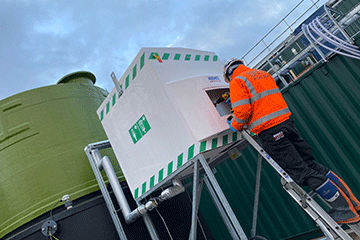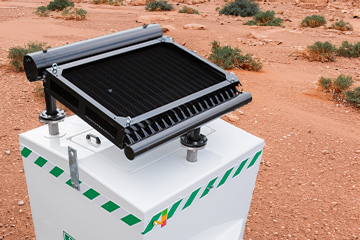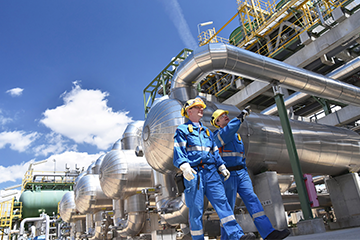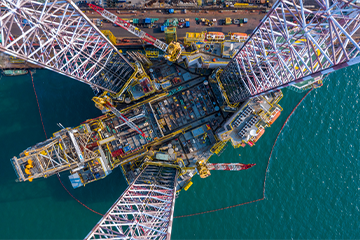Enquiry List () (0)
- 2 Nov 2023
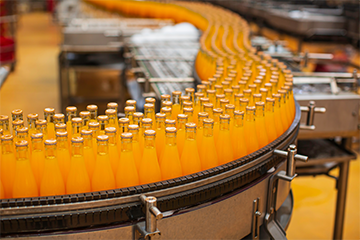
Transparency on hazards and how to improve site safety in glass manufacturing
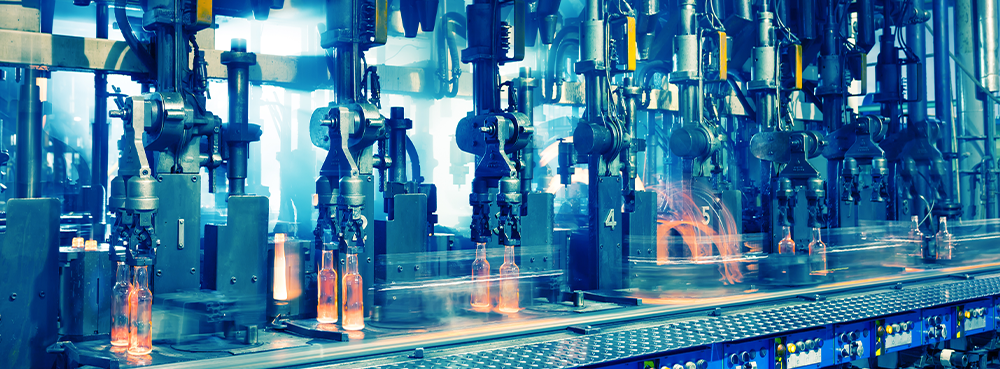
From food and drink containment to perfumes and colognes, glass and glass containers are an essential part of our day-to-day lives. It’s forecasted that 916 billion units of glass bottles and containers will be manufactured in 2028 alone. Throughout the production process, many caustic and corrosive chemicals such as ammonia, silane, and titanium tetrachloride are used which can cause severe harm in the event of a chemical spill. Worker safety must be maintained as a priority.
The initial stage of the manufacturing process involves loading of the furnaces with raw material to melt into molten glass or ‘gobs’. For this, the furnaces are loaded with a mixture of limestone, sand and soda ash. Cullet, or broken-down recycled glass, is also added to the mixture. Temperatures inside the furnace are maintained between at a staggering 2600F to 2800F to reach the melting point for these materials. During this stage, various chemicals are produced, including sulphur dioxide, nitrogen dioxide, and carbon monoxide. Workers who operate and load the furnaces are particularly vulnerable to these chemicals, as they can experience eye and skin irritation.
To ensure the risk from exposure to these chemicals are mitigated a safety shower and eye wash should be stationed nearby. If the eyes or skin become irritated through contact, this allows the casualty to flush the affected body part for a minimum of 15 minutes. Safety shower and eye wash use for this long is suggested by ANSI and European standards to ensure the affected areas are thoroughly decontaminated and minimise any lasting ailments, such as chemical burns or dermatitis.
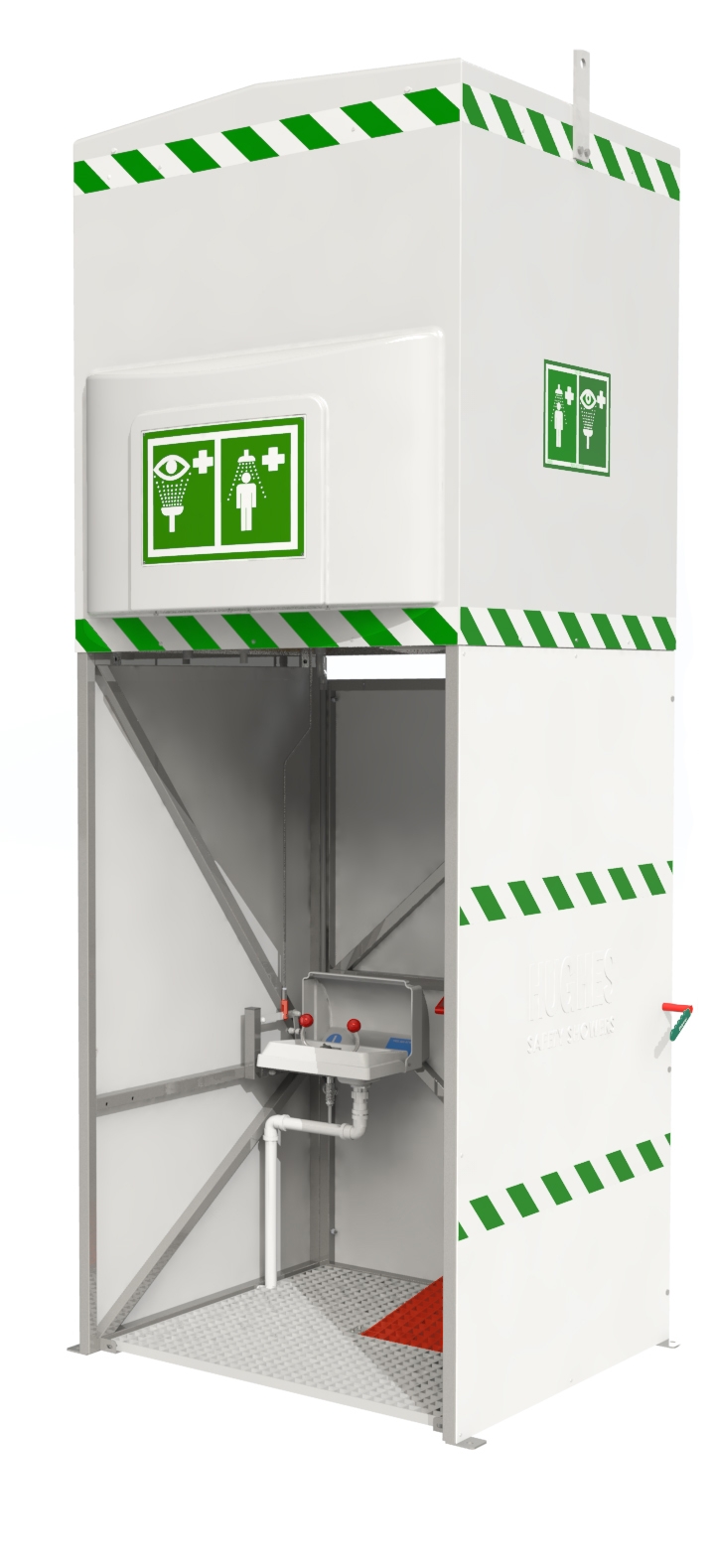 Once the gobs have formed, they are passed through to the moulds, where compressed air blows the molten glass to the desired shape and is then cooled. Before the glassware is sent to the customer it must be cleaned of debris and visually inspected for imperfections, requiring more manual handling than the previous stages. Cleaning chemicals often consist of acids and solvents to remove any dirt or contaminants. These chemicals can be hazardous to workers if spilt, causing burns and irritation to eyes and skin if left untreated.
Once the gobs have formed, they are passed through to the moulds, where compressed air blows the molten glass to the desired shape and is then cooled. Before the glassware is sent to the customer it must be cleaned of debris and visually inspected for imperfections, requiring more manual handling than the previous stages. Cleaning chemicals often consist of acids and solvents to remove any dirt or contaminants. These chemicals can be hazardous to workers if spilt, causing burns and irritation to eyes and skin if left untreated.
Typically, a combination safety shower and eye wash station should be located within 10 seconds reach, free from obstruction, and on the same level as the hazard. This way employers provide a safe decontamination zone and comply to international and European safety standards. Standards also stipulate that the water provided must be tepid (within a range of 15C-37C for European standards and 16C-38C for ANSI) to prevent further injury to a casualty and allow them to remain comfortably under the flow of water for up to 15 minutes. Hughes’ extensive range of safety showers feature various temperature controlling options that aim to keep the water temperature provided by the shower in the tepid range to comply to standards and suitably relieve a casualty.
For sites with safety facilities located outdoors in colder climates a trace-tape or immersion heated unit is essential. The trace-tape heated safety shower with ABS closed bowl eye wash is an all-in-one solution with added frost protection. The closed bowl eye wash protects the diffusers from external contaminants and debris while the trace tape heating provides added frost protection to the pipework. For extremely cold climates our Immersion heated safety shower with eye wash and handheld eye bath is even more robust. This unit’s heating element paired with polyurethane foam insulation allows for operation in temperatures as low as -35C while still maintaining water temperature in a tepid range that meets European standard requirements.
Where a water source is unreliable or impossible to implement, Hughes range of emergency tank showers are the ideal solution. The 1500L tank shower provides 15 minutes of water to a casualty even in remote locations. Hughes tank-fed showers can be fitted with various customisation options. For example, alarm packages sound when the shower is activated to alert nearby workers of a chemical contamination and can signal for the help of medical attention.
To enhance your site’s safety, contact Hughes today to discuss your safety shower and eye wash requirements with a member of our team.




